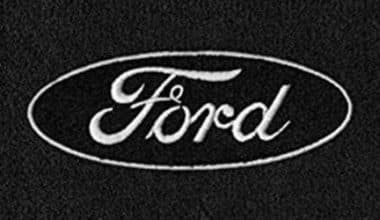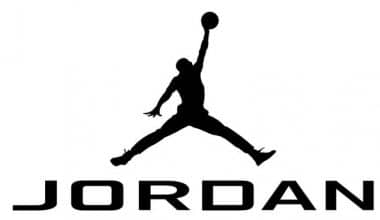A pharmacist named Charles Alderton created a fizzy beverage in the 19th century. It’s still unclear how the beverage got to be known as “Dr. Pepper,” but he updated the label to say “Dr. Pepper, King of Beverages,” in 1885. Did you know that the iconic Dr. Pepper logo has been around for 135 years? Although it’s hard to imagine, it’s true. The advertisement for this brand is for the original, completely healthy, and light recipe that has stood the test of time. Read on to learn more about the Dr. Pepper logo from its meaning, history, & evolutionary changes.
Dr. Pepper Logo
The Dr. Pepper soft drink corporation was founded in America in 1885. Now packaged in dark red cans with a secret recipe, the beverage is available in supermarkets all over the world. Every beverage sold by Dr. Pepper has a distinctive flavor that may be identified. The Dr. Pepper logo has seen various changes, but its core design has stayed the same. Since 1885, it has been constructed around the wordmark, and red has been used since the 1920s. The cherry color from the original, 1885 design has remained constant throughout the Dr. Pepper logo’s 15 redesigns. It is the shade of the background, frame, or text.
Why is Dr. Pepper so delicious to taste? Actually, all 23 flavors are combined to create Dr. Pepper. The aroma of that pharmacy was created by the interaction of all the materials.
Depending on the container it’s in, Dr. Pepper won’t stay fresh for very long. It keeps for around nine months in glass or cans and for about three months in plastic bottles. How long you’ve had Dr. Pepper and whether you’ve opened it or not play a big part in this.
What Are The 23 Flavors In Dr. Pepper?
These flavors combined to produce the scent of the pharmacy where Dr. Pepper was first produced, and So and So enjoyed the fragrance of his drugstore so much that he wanted to imitate it. Coke, cherry, licorice, and amaretto (almond, vanilla, blackberry, apricot, blackberry, caramel, pepper, anise, sarsaparilla, ginger, molasses, lemon, plum, orange, nutmeg) were helpful in helping him do this
Warming Dr. Pepper was developed as a wintertime beverage and is a soda drink that may be consumed hot, cold or even both ways. To make this beverage, you’ll need Dr. Pepper, a lemon, a cup, and a saucepan. The saucepan is heated to 180 degrees before the soda is added. To give it flavor, you place a slice of lemon in the mug before adding the warm soda.
Dr. Pepper’s Slogan or Tagline
- Be a Pepper.
- Be You
- There’s just more to it
- This is the Taste.
- King of Beverages.
- Always one of a kind.
- What’s the Worst That Could Happen?
- I’m a pepper, he’s a pepper, she’s a pepper…
- Drink a Bite to Eat at 10, 2, and 4 o’clock.
- When You Drink a Dr. Pepper You Drink a Bite to Eat.
- Good For Life.
- The Friendly Pepper Upper.
- America’s Most Misunderstood Soft Drink.
- It is the Most Original Soft Drink Ever.
- Dr. Pepper Has Made a Pepper Out of me.
- It Tastes and It Looks.
- Out of the Ordinary. Like You.
- Just what the Doctor ordered.
- It’s Dr. Pepper Flavour, Silly!
- Expect the Unexpected!
- Now’s the Time. This is the Place. Dr. Pepper Is The Taste.
- Dr. Pepper, Makes the World Taste Better.
- Solves All Your Problems.
- Dr. Pepper, to try it is to love it
- One Taste & You Get It.
- Can You Handle The Taste?
- Dr. Pepper, makes the world go round.”
- Dr. Pepper, nothing better.
- The Dr knows the right touch.
- There’s more to it.
- I Want It All.
- Drink It Slow, Dr’s Orders.
- Trust me – I’m a Doctor.
- There’s nothing like a Pepper.
What Does The Dr. Pepper Logo Mean?
The logo is still a bright reddish-burgundy color. All bubble iterations have been eliminated, making the logo more straightforward. The name is shown in the current logotype against a shaped background. The colors of the lettering and backdrop have been changed. The “bubble” picture faded but continued to stand for freshening.
What Does The 10, 2, And 4 Stand For on The Dr. Pepper Logo?
Early company branding urging customers to sip Dr. Pepper at 10 AM, 2 PM, and 4 PM gave rise to the name “10-2-4 Collectors’ Club.” Some of these early company logos featured representations of clock dials.
Why Did Dr. Pepper Change Its Logo?
In order to convey the energizing liveliness of the beverage, it was decided in 1997 to include tiny bubbles in the logo. In 2005, the logo’s white text on a dark red background began to resemble one colossal bubble. Dr. Pepper strategically decided to reverse their logo ten years later.
Old Dr. Pepper Logo History
The original Dr. Pepper contained ingredients that might have been purchased at the pharmacy known as Morrison’s Old Corner. Charles Courtice Alderton, a brand-new pharmacist, started working there in 1885. He enjoyed creating mixtures for soft drinks by blending various fruit extracts and sugars. While the soda line quickly delivered drinks, one flavor was the first to run out. Consumers had a special preference for the Waco beverage, which later adopted the moniker Dr. Pepper. Wade Morrison, the pharmacy’s proprietor, gave him this moniker.
Do you know why Dr. Pepper? This question has still not received a definite response. Someone is making an effort to connect the company’s name to real people, such as renowned doctor Charles T. Pepper or a specific Dr. William Alexander Reed Pepper, who is said to have lived next door to Morrison.
A different source claims that the term “Dr.” was employed without any reference to the profession. Doubters assert that it was just included to boost consumer confidence. Every time a doctor is mentioned, one assumes that there will be a therapeutic impact, so the beverage seems to be a useful medicine.
These theories are supported by a variety of legends, but none of them has any trustworthy supporting data. Wade Morrison received the Waco formula from Charles Courtice Alderton, who later gave the Dr. Pepper trademark its unique name. The proprietor of the drugstore had to increase production because there was such a high demand for the beverage. The well-known business is currently a part of the Dr. Pepper Snapple Group. His collection of old logos has been preserved and utilized as inspiration for contemporary design.
Dr. Pepper Logo History From 1885 – 1911
Wade Morrison purchased the Waco soft drink recipe in the 1890s, and he gave it the moniker “Dr. Pepper,” which established the foundation for its industrial production. The trademark name, which was printed in a vintage font with curls, was one of the first symbols to be used simultaneously. The letters were arranged in a long chain and were all red. The final “r,” which twisted to the left, dropped a broad, chaotic line. Since it was long enough, the term “year-round” was added.
Dr. Pepper Logo History From 1911 – 1934
Later, designers eliminated the spiral components to simplify the font. In the top right corner, the word “Drink” could be seen. The term “KING OF BEVERAGES” was altered to black and white in the official version of the logo. A lengthy “pp” separated the word “TRADEMARK,” which was put at the bottom, into two halves.
Dr. Pepper Logo History From 1934 – 1954
The font used for the center lettering has been updated. A wall built of orange bricks could be seen in the distance. The “TRADE MARK” subscript was deleted, and the word “DRINK” was capitalized. The horizontal strip carried the new business slogan, “VALUE FOR LIFE the shade black. White has been applied over the text’s primary components.
Dr. Pepper Logo History From 1954 – 1958
The lack of a dot after “Dr.” in the wordmark in the middle of the 1950s helped the business avoid legal issues because consumers thought the wordmark’s abbreviation for “doctor” signified the drink’s medicinal capabilities. Second, the logo appeared less congested as a result of its simplicity. Bold italics weren’t necessary to make the plain red “DR PEPPER” text more difficult. Small circles were added to the tops of both letters “r” to act as a reminder, so the point hasn’t completely been forgotten.
Dr. Pepper Logo History From 1958 – 1960
There was consequently a white oval surrounding the corporate name. Even serif type was used to write the red characters. A dark red “10,” a pink “2,” and a white “4” were slightly lower in multicolored circles. The exploding bubbles also served as a visual representation of the refreshing soda and matched the background color of the logo, which was printed on black cans with vertical yellow and red stripes.
It was necessary to convert the cryptic numbers written as 10:00, 14:00, and 16:00 into time. Also, according to Dr. Pepper’s research, people’s blood sugar levels drop at these times. The business highlighted the recently found truth by providing something sweet, like a soft drink, to make up for the lack of glucose.
Dr. Pepper Logo History From 1960 – 1963
The can’s dominant color was altered to white. “DR PEPPER” had the same lettering. The trademark oval’s color changed as well, turning crimson and gaining a beautiful golden border. Ten, two, and four were removed because the company wished to alter its advertising strategy.
Dr. Pepper Logo History From 1963 – 1967
The oval emblem’s golden shape vanished when the vertical lines on the cans vanished. Instead, there was a yellow “arrow” with two downward-pointing triangles underneath it.
Dr. Pepper Logo History From 1967 – 1971
The color palette was altered by the designers in the late 1960s. The oval was made of burgundy, and a silver line encircled it. The writing was still white. The can’s decoration also incorporated the same color scheme.
Dr. Pepper Logo History From 1971 – 1984
The logo first appeared in 1971 in bold italic letters. The oval morphed into an intensely red elliptical shape.
Dr. Pepper Logo History From 1984 – 1990
Cherry red and scarlet were thus mixed in the 1984 redesign. A bold red line that extended from the base of the emblem upright highlighted the white custom lettering that was positioned diagonally over a cherry background. The wordmark was also horizontally oriented and had a crimson peak in the upper left corner. Typically, the same symbol was also printed in monochrome on official papers in monochrome.
Dr. Pepper Logo History From 1990 – 1997
The major feature was now bigger and in the center of the rectangle when the red oval was removed from the sign in 1990. Because the logo was more current and hip than ever, the branded products stood out on supermarket shelves all over the world.
Dr. Pepper Logo History From 1997 – 2005
In order to give the wordmark additional depth and a layered structure, it was redone in 1997 using a more recognizable typeface. The red underlining was repainted with fuzziness and unevenness, and more red specks were added to the cherry backdrop. The logo seems fresh and contemporary. This logo is still on the Dr. Pepper bottle in some nations, such as England.
2005 – 2015Dr. Pepper Logo History From 2005 – 2015
The lettering was once again in the red oval in 2005, but this time it was colored irregularly. The appearance of a cycle was created by the curving lines in the margins. Following the brand name, it stated: “Est. 1885” before stating the year of its debut.
Dr. Pepper Logo History From 2015 – Today
The current logo, created in 2015, has a cherry-red wordmark inside an oval frame with an arching line on the right and an extended “P” tail on the left. The Dr. Pepper visual brand’s classic components are all included in the logotype, but it does so in a novel way. The logo radiates authority and intelligence when placed on a white background.
The Dr. Pepper Logo Font
The actual font used to write the Dr. Pepper logo is a distinctive, bold italic sans serif. It was specifically designed for the brand. This time, the background is white and the text is vivid. Despite how frequently they have changed, we anticipate that the current Dr. Pepper logo font colors will soon be updated.
Dr. Pepper Logo Color
Since the 1920s, red has been the Dr. Pepper logo’s dominant hue. But the color of the red has changed. The corporation thoroughly considered all of its options before settling on the current, fairly understated, dark red wordmark.
Dr. Pepper Emblem
The wavy lettering of the Dr. Pepper emblem was dropped in favor of a bold, italic sans-serif font in the 1950s. A new color (yellow) was tried out in the 1956 revision, but the designers immediately abandoned it in the 1958 edition. Both the font and the red tones have undergone various alterations throughout time.
Is Dr. Pepper Healthier Than Coke?
While Hunnes observes that Pepper has 10 more calories and two more grams of carbs (commonly known as sugar) per serving, Pepper and Coke essentially have the same components.
What’s The Main Flavor of Dr. Pepper?
Given that pepper is a fusion of 23 flavors, neutralizing a description of it is difficult. Dr. Pepper is most commonly associated with the flavor notes of cherry, allspice, vanilla, mint, and licorice.
History of Dr. Pepper
The phrase “Dr. Pepper” first appeared in literature in 1885. At the Louisiana Purchase Exposition in 1904, it made its American premiere as a brand-new soda pop with 23 varieties. It was first made available in 1885, the same year Coca-Cola was introduced to the public.
Charles Alderton, a Brooklyn pharmacist, made it in Waco, Texas. Wade Morrison was the first to try his unusual drink and liked it. Morrison’s soda machine consumers demanded “Waco” after hearing about Alderton’s new drink. Alderton handed Morrison the recipe, which he named Dr. Pepper (later stylized as “Dr Pepper”). Early soft drink advertisements used the claim that their products would “improve digestion and restore vim, vitality, and life.”
The Dr. Pepper recipe, like Coca-Cola’s, is reportedly housed in two safe deposit boxes at Dallas banks. The official Dr. Pepper FAQ dispels the misconception that the drink contains prune juice, which dates back to the 1930s. Some claim a competitor’s deliveryman started the rumor to denigrate Dr. Pepper by mentioning prune juice’s laxative effects, although it could have started because many people think Dr. Pepper tastes like prune juice.
In 2009, Bill Waters was perusing an antique store in the Texas Panhandle when he came across an ancient ledger book. Numerous calculations and recipe notes were also recorded in the journal. W.B. Morrison & Co.’s Old Corner Drug Store, where Dr. Pepper was originally served in 1885, was noted on pages and letterheads, and “Castles Formulas” was written in faded letters on the book’s cover. John Castles had been Morrison’s business partner at least since 1880. Some thought “Dr. Pepper’s Pepsin Bitters” was an early Dr. Pepper recipe. Keurig Dr. Pepper is a digestion aid, not the original recipe. The book was put up for auction in May 2009, but no one made a bid.
Name (How The Name Came About)
There are numerous explanations behind the naming of the soft drink. The choice of name may have been influenced by the widespread practice at the time the drink was created of adding Dr. to the name of products to give the idea that they were healthy.
The beverage may have been named after a genuine doctor, Charles T. Pepper of Rural Retreat, Virginia, according to a generally accepted theory. Morrison may have named the beverage after the doctor as a token of appreciation from Pepper for giving him his first job. Milly Walker, collections manager and curator at Dublin (Texas) Dr. Pepper Bottling Co., maintains Morrison never worked for Charles T. Pepper at Rural Retreat. The exhibit notes that America. According to census data, a young Morrison resided in Christiansburg, Virginia, 40 miles (64 km) away from Rural Retreat. A different story says Morrison named the drink after Charles T. Pepper because he allowed him to marry Pepper’s daughter when she was just 8 years old.
Another likely source of inspiration for the name is Christiansburg-based Dr. William, Alexander Reed Pepper. Morrison is listed in the census as a resident of Christiansburg, a drugstore clerk, and a Dr. Pepper enthusiast. Since census takers at the time walked door to door, the proximity of these census data implies that Morrison and Dr. Pepper lived nearby. Also listed as a parent is Mary Ann “Minnie,” Pepper’s 16-year-old daughter.
Dr. Pepper glass bottle from the 1970s with a logo. Up until the 1950s, Dr. Pepper emblems occasionally included a period (full stop) after the company name. Due to stylistic and legibility difficulties, it was eventually permanently removed following a lengthy discussion. The letters in a new design at the time were angled, making Di: resemble Dr.
Legal and Business History
Dr. Pepper sued Coca-Cola for $750,000 in 1951, saying its nickel Coca-Colas were sold below cost and were a trade barrier. The legal success of Dr. Pepper as a “non-cola” soft drink led W.W. “Foots” Clements, the company’s president and CEO at the time, to convince the Coca-Cola Bottling Company of New York to bottle and market Dr. Pepper in 1969.
Based on Coca-Cola’s “Peppo” Cola soft drink, Dr. Pepper also filed a trademark infringement lawsuit against the business in 1972. Mr. Pibb is the new name for the Coca-Cola product. Early in the 1980s, Dr. Pepper encountered financial issues, which prompted an investment group to purchase the business privately. A few years later, Dr. Pepper’s acquisition by Coca-Cola was barred by the Federal Trade Commission (FTC). The same financial firm that saved Dr. Pepper bought Seven Up from Phillip Morris around the same time. After the Coca-Cola merger failed, Dr Pepper and Seven Up joined to form Dr. Pepper/Seven Up, Inc. Coca-Cola acquired the majority of the Dr. Pepper name’s non-US rights following the DPSU merger (with PepsiCo taking the Seven Uprights).
Dr. Pepper frequently participated in the American antitrust history of the 1990s. The Federal Trade Commission (FTC), concerned about a “pepper” soft drink monopoly, halted The Coca-Cola Company and Dr. Pepper’s 1995 merger. Jerry Jones, the Dallas Cowboys, NFL Properties, Nike, and other commercial interests were embroiled in an antitrust dispute in 1996. Dr. Pepper was also a defendant in the lawsuit. The league claimed Jones’ relationships with Dr. Pepper and other companies breached exclusive marketing rights with Coca-Cola and other companies. The NFL gave Jones and other clubs permission to conduct their own searches. The “pepper” flavor soda sector was a critical component of the study supporting the claim in the Coca-Cola-Pepsi antitrust dispute in 1998.
Simple Terms About Dr. Pepper
- The U.S. Patent Office claims that Dr. Pepper was initially served on December 1, 1885.T
- The Artesian Manufacturing and Bottling Company, subsequently known as the Dr. Pepper Company, was founded by Morrison and Lazenby in 1891.
- At the St. Louis World’s Fair Exposition in 1904, which also saw the public’s introduction of ice cream cones and hamburger and hot dog buns, the business served Dr. Pepper to the 20 million attendees.
- The Dr. Pepper Company is the nation’s oldest well-known producer of syrups and soft drink concentrates.
- In addition to the United States, Europe, Asia, Canada, Mexico, and South America, Dr. Pepper is currently imported into New Zealand and South Africa.
- A number of the new varieties, as well as Diet Dr. Pepper, a type of Dr. Pepper without high-fructose corn syrup, were first introduced in the 2000s.
What Was The Old Dr. Pepper Slogan?
The cryptic numerals 10, 2, and 4 on the glass bottles are explained to visitors to the Dr. Pepper Museum in Waco, Texas, along with the unique history and legacy of the original Dr. Pepper brand. It turns out that “Drink a bite to eat at 10, 2, and 4” was the original Dr. Pepper tagline. Do we actually understand it now?
What Two Sodas Make Dr. Pepper?
Due to recent purchases of their main bottlers, PepsiCo and The Coca-Cola Company now possess the majority of Pepsi and Coke bottlers that also bottle Dr. Pepper. Currently, Dr. Pepper Snapple bottles and distributes its goods in more than 30 states using its own bottling business.
Fascinating Facts About Dr. Pepper
#1. Charles Alderton, a Pharmacist From Waco, Texas, Created Dr. Pepper in 1885.
Alderton noted that customers at Wade Morrison’s Old Corner Drug Store adored the soda fountain’s pleasant aroma and made the decision to develop a drink that tasted just like the well-known flavor. He didn’t work on a cattle ranch which is good for us.
#2. It is The Oldest Popular Soft Drink Brand in the Country.
Dr. Pepper was developed eight years before Pepsi and a year before Coca-Cola (1886). (1893). Texas (and dental professionals elsewhere) can rejoice!
#3. The Name’s Etymology is Disputed
Before being known as Dr. Pepper, customers would just request a “Waco” from the soda machine. However, credit for the drink’s actual name is assigned to Dr. Charles T. Pepper, a physician who approved Wade Morrison’s marriage to his daughter (even though they never went through with the wedding). He might have decided to participate in the competition exploiting his recently gained carbonated celebrity status.
#4. The Tagline “10, 2, and 4 o’clock” Was Inspired By a Research Project on Human Weariness.
which discovered that between 10:30 am and 4:30 pm, a person’s blood sugar levels are at their lowest. By “drinking a bite to eat,” the mid-afternoon sugar crashes could be avoided (by drinking more sugar).
#5. Texas is Not the “Dr. Pepper Capital of the World.”
The area has been referred to as “Roanoke Valley” since 1957 since it set records for widespread beverage consumption in the 1950s.
#6. The Ingredients For the “Flaming Dr. Pepper” Cocktail Are an Amaretto Shot, Beer, 151 Rum on Top, and Finally, a Match.
It actually tastes a lot like Dr. Pepper, if you can stop yourself from putting yourself or the bar on fire. Caffeine-free, but who cares. If you care, here’s how to make it.
#7. You Can Make Almost Anything With Dr. Pepper.
You know, Dr. Pepper isn’t just for drinking. Stubb’s BBQ sauce, Jelly Belly beans, cotton candy, and other items all contain the 23 secret ingredients. With a candle, you may taste the genuine Dr. Pepper flavor. Additionally, you can use it in your cooking to make dishes that are sure to please everyone, such Dr. Pepper pulled pork or Mulled Dr. Pepper, which you can use this holiday season in place of eggnog.
#8. There is a Rumor That Dr. Pepper is Haunted.
Do you wish to learn the origins of the magic? Visit Waco for a Dr. Pepper-themed event. Tickets for the Extreme Pepper Experience, which features a VIP Make-A-Soda experience, a glass bottle of Dr. Pepper, a sizable Dr. Pepper ice cream float, and more, are on sale. or equipped for this? You may explore the museum at night on a ghost hunt with the Paranormal Experience. Yes, you have access to other locations where unusual happenings have been known to occur in addition to the forbidden basement.
#9. It Was Once Classified as Food By Congress.
In response to the rationing of sugar during World War II, Dr. Pepper asked Congress to declare soda to be food. In a brochure titled “The Liquid Bite,” they argued that the energy boost provided by soda’s sugar was crucial to the war effort. Since we won the war, they must have been correct. Right?
Related Article
- COFFEE STOCKS: 5 Best Coffee Stocks 2022 ( + pricing plan )
- CHIPOTLE LOGO: Meaning, Font and History
- VEGAN CHEESE BRANDS: Best 10+ Non-Diary Options and Reviews
- BUSINESS COLLABORATION: Types, Benefits, and Examples (+Free & Paid Software Options)
- What Makes Soda Pdf the Best Tool for Your Business?






